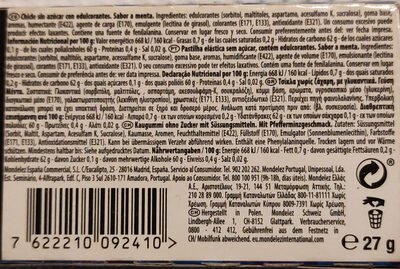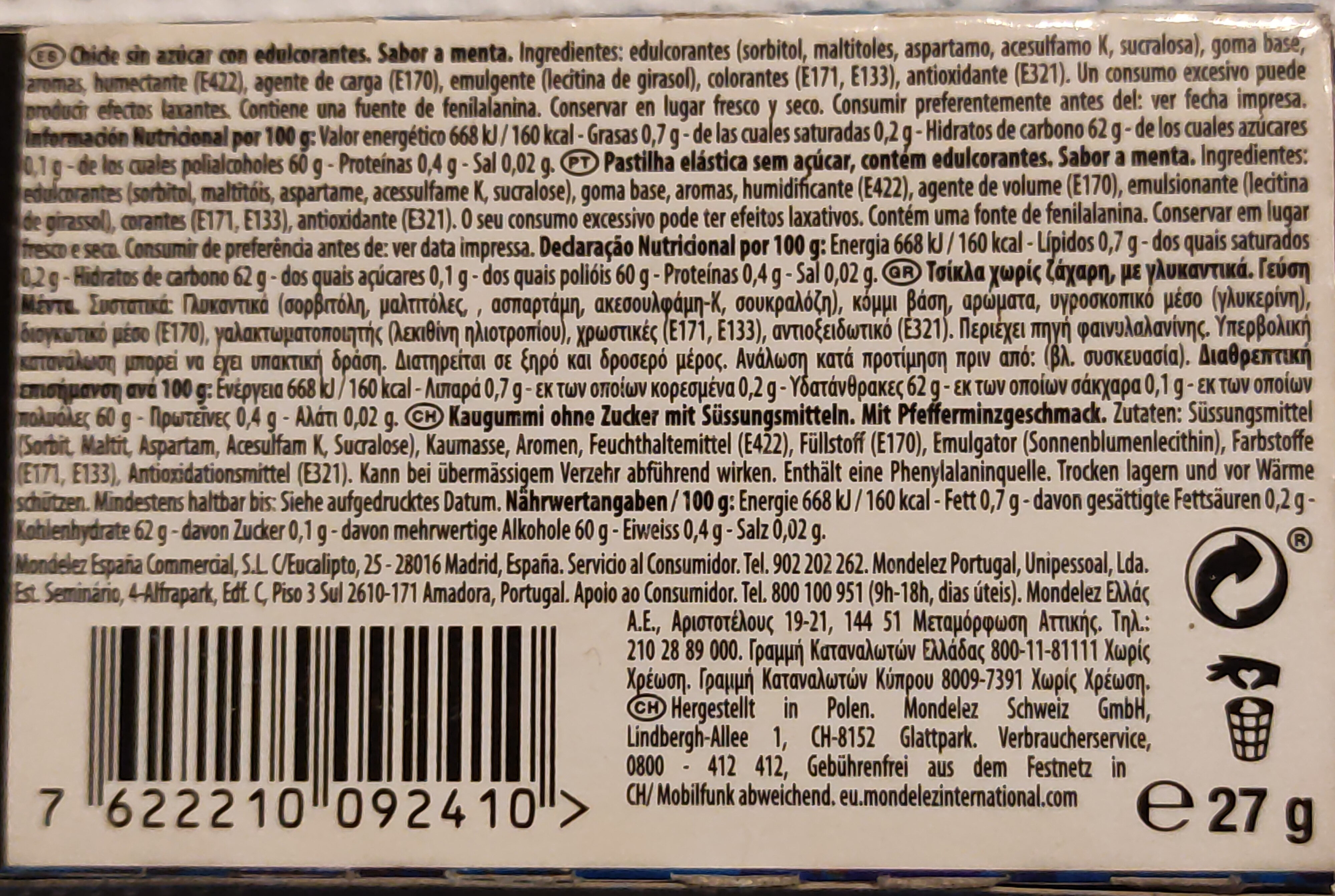trident chicles - 27g
This product page is not complete. You can help to complete it by editing it and adding more data from the photos we have, or by taking more photos using the app for Android or iPhone/iPad. Thank you!
×
Barcode: 7622210092410 (EAN / EAN-13)
Quantity: 27g
Brands: Trident
Categories: Snacks, Sweet snacks, Confectioneries, Chewing gum, Sugar-free chewing gum
Labels, certifications, awards:
Contains a source of phenylalanine, Green Dot
Manufacturing or processing places: españa
Countries where sold: Spain
Matching with your preferences
Environment
Packaging
Transportation
Report a problem
Data sources
Product added on by openfoodfacts-contributors
Last edit of product page on by naruyoko.
Product page also edited by off.545aab4f-e0ba-458d-a768-135847503574, packbot, roboto-app, thaialagata.
If the data is incomplete or incorrect, you can complete or correct it by editing this page.






